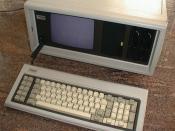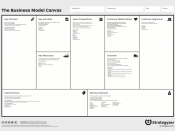Hybrid Business Model MicroAge has adopted a hybrid business model: they are both a full-line distributor and a value-added systems integrator and services company. This hybrid model has been met with confusion and skepticism within the marketplace and within the organization. The stock price fell from 29 in September 1997 to 12ÃÂý in December.
Analysis MicroAge's hybrid strategy places the firm in a much stronger competitive position than they would be in if they were solely a distributor or solely a provider of integration services. There are clear synergies to be achieved between these two lines of business.
Distribution Expanded Supplier and Product Base By 1997 MicroAge provided over 20,000 products from over 500 suppliers. MicroAge also expanded its product line to provide high-end Unix servers and networking products.
Channel Assembly The Channel Assembly program was first developed between MicroAge and IBM in 1996. By 1997 MicroAge had channel assembly agreements with HP, Compaq, Panasonic, Digital, Acer, SUN and Intel.
Analysis MicroAge is successfully demonstrating their ability to broaden the breadth of their business and move "upstream"ÃÂ in the value chain.
Systems Integration Regional Structure In 1997 MicroAge adopted a new organizational model for the Integration Group which was based on a regional structure.
Aggressive Growth In September 1997 MicroAge began through acquisition to aggressively add new branch offices. The number of company owned offices providing integration services increased by 165% (from 17 to 45) in a two month period (September-October).
Global Account Teams MicroAge created global account teams to service its 50 largest customers.
Analysis Although viewed as a competitive threat by VARs, this reorganization and expansion is the right thing to do. Company owned branch offices are the only way that MicroAge will be able to provide the "personalized, responsive, and consistent service"ÃÂ demanded by large customers.
Electronic Commerce ECadvantage In 1996 MicroAge partnered with pcOrder.com to create ECadvantage, an Internet-based order fulfillment, quoting and configuration tool. By then end of 1997 ECadvantage had 28,000 users and MicroAge was having difficulty integrating the system with its existing fulfillment, warehousing, inventory and billing systems.
1998 Request for Proposal In 1998 MicroAge solicited bids for a next generation e-commerce solution that would be based on an integrated network and would address the weaknesses of ECadvantage.
Microsoft Technology In 1998 MicroAge launched an initiative to unite its disparate e-mail and intranet systems and to standardize on technology from Microsoft.
Analysis MicroAge has grown and entered new businesses very rapidly, more rapidly than its internal information systems could support. MicroAge is appropriately placing great emphasis on revamping its systems.


